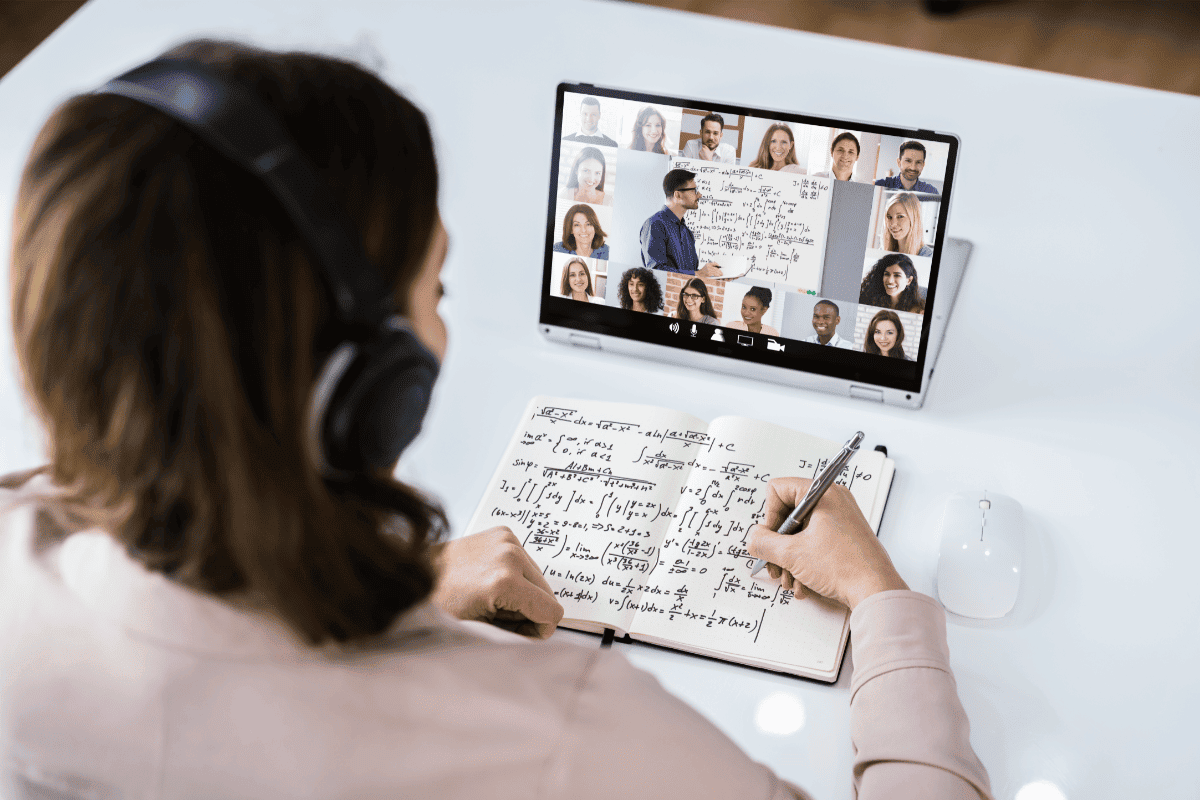Social Learning eLearning
Did you know that students who engage in social learning and participate in online communities are more likely to succeed in their eLearning courses?
In fact, a study conducted by researchers found that students who actively interacted with their peers and utilized social networks in their eLearning journey had higher completion rates and better overall academic performance.
This statistic highlights the importance of peer interactions and social networks in eLearning, emphasizing the need for educators to leverage these tools to enhance student engagement and learning outcomes.
In this article, we will explore the significance of social interaction in eLearning and how it can be leveraged through peer collaborations and social networks.
We will delve into the benefits of peer collaboration, such as increased knowledge sharing and a sense of community within virtual classrooms.
Additionally, we will discuss strategies for incorporating group projects, collaborative assignments, discussion forums, online debates, and other interactive elements into eLearning courses.
By understanding the power of social learning and creating opportunities for peer interactions, educators can create engaging online environments that foster active participation, deeper understanding of course materials, and ultimately improve student success.
So let’s dive in and discover how you can harness the power of social learning to transform your eLearning experience!
Key Takeaways
- Engaging in group projects and collaborative assignments online enhances collaborative skills.
- Peer feedback plays a crucial role in enhancing learning outcomes.
- Building social networks in eLearning platforms enhances the learning experience.
- Online communities provide emotional support, guidance, and networking opportunities.
Importance of Social Interaction in eLearning
You must understand the significance of social interaction in eLearning as it plays a crucial role in enhancing the overall learning experience. Social media has become an integral part of our lives, and its role in eLearning cannot be underestimated.
By leveraging social media platforms, learners have the opportunity to connect with their peers, share knowledge, and collaborate on projects. This fosters online relationships, creating a sense of community and support that is essential for effective learning.
One of the primary benefits of social interaction in eLearning is that it promotes active engagement among learners. When students are able to connect with each other through social media platforms, they become more motivated to participate actively in discussions and share their ideas. This not only enhances their understanding of the subject matter but also helps them develop critical thinking skills by considering different perspectives.
Furthermore, fostering online relationships through social interaction allows learners to access diverse viewpoints and experiences. In traditional classroom settings, students may be limited to interacting with a small group of classmates. However, through online communities and forums, learners can connect with individuals from different backgrounds and cultures. This exposure to diverse perspectives enriches the learning process by promoting empathy, tolerance, and open-mindedness.
Recognizing the importance of social interaction in eLearning is essential for creating a successful online learning environment. By utilizing social media platforms and fostering online relationships, learners can actively engage with their peers and benefit from diverse perspectives. Incorporating these elements into eLearning programs not only enhances the overall learning experience but also prepares individuals for real-world interactions where collaboration and communication skills are highly valued.
Benefits of Peer Collaboration in Online Learning
Collaborating with classmates in online courses is like exploring a vast ocean of knowledge together, where each person’s unique perspective acts as a compass pointing towards new and exciting discoveries. Peer collaboration in online learning offers numerous benefits that enhance the overall learning experience.
Here are three key advantages:
- Peer mentoring: When you collaborate with your classmates, you have the opportunity to learn from their experiences and expertise. Each individual brings their own set of skills and knowledge to the table, creating a rich learning environment where everyone can benefit from each other’s strengths. Peer mentoring allows you to gain insights and perspectives that you may not have considered on your own, broadening your understanding of the subject matter.
- Collaborative problem-solving: Working together with peers fosters critical thinking and problem-solving skills. Through discussions and group activities, you can tackle complex problems by pooling different ideas and approaches. This collaborative approach encourages active engagement, as you analyze different viewpoints, evaluate evidence, and come up with innovative solutions collectively. In this way, peer collaboration promotes deeper learning by challenging your assumptions and helping you develop a more comprehensive understanding of the topic.
- Enhanced motivation and accountability: Being part of a community of learners creates a sense of belonging and motivation to succeed. When collaborating with peers, you become accountable not only to yourself but also to others who rely on your contributions. This sense of responsibility drives greater effort and commitment towards achieving common goals. Additionally, working collaboratively provides opportunities for encouragement, support, and celebration of achievements along the way.
Overall, peer collaboration in online learning offers invaluable benefits such as peer mentoring for diverse perspectives, collaborative problem-solving for critical thinking skills development, enhanced motivation through accountability within a supportive community environment. By actively engaging with classmates in online courses, you can tap into collective knowledge while forging meaningful connections that enrich your learning journey.
Creating a Sense of Community in Virtual Classrooms
Creating a sense of community in virtual classrooms is like building a warm and welcoming home where students can connect, support, and inspire each other. In an online learning environment, it’s important to foster virtual connections and promote an online community that encourages collaboration and engagement. By creating a strong sense of community, students are more likely to feel connected to their peers and have a greater sense of belonging, which ultimately enhances their learning experience.
One way to promote online community is through the use of discussion forums or chat rooms. These platforms allow students to interact with one another, share ideas, ask questions, and provide support. By actively participating in these discussions, students not only gain valuable knowledge from their peers but also develop relationships that can extend beyond the virtual classroom. This interaction fosters a sense of camaraderie and creates a supportive environment where everyone feels comfortable sharing their thoughts and opinions.
Another effective strategy for creating a sense of community is through group projects or collaborative assignments. By working together towards a common goal, students are able to build relationships with their classmates while developing important teamwork skills. Group projects encourage communication, cooperation, and problem-solving abilities as students learn from one another’s strengths and perspectives. Through these shared experiences, virtual classrooms become vibrant communities where individuals come together to achieve shared objectives.
Fostering virtual connections and promoting an online community is crucial in creating a sense of belonging in virtual classrooms. By utilizing discussion forums or chat rooms for open dialogue among students and implementing group projects for collaborative work, educators can create an environment that encourages peer interactions and supports student success. When learners feel connected to their peers in this way, they are more motivated to engage actively with the course material while enjoying the support and inspiration provided by their fellow classmates.
| Emotion | Description | Example | |
|---|---|---|---|
| Excitement | A feeling of enthusiasm or eagerness | “I’m really excited to meet new people and learn from their experiences in the virtual classroom.” | |
| Belonging | A sense of acceptance or inclusion | “Being part of an online community makes me feel like I belong and that my voice is heard.” | |
| Support | Assistance, encouragement, or backing provided by others | “I appreciate the support I receive from my classmates when tackling challenging assignments in the virtual classroom.” | ‘I appreciate the support I receive from my classmates when tackling challenging assignments in the virtual classroom because it reinforces my belief that I am not alone in my struggles and that we are all working together towards a common goal.’ |
Utilizing Discussion Forums for Knowledge Sharing
When you participate in discussion forums, you’re not just sharing your knowledge, but also gaining valuable insights from your peers. Collaborative learning is at the heart of these online communities, where individuals come together to exchange ideas and engage in meaningful discussions.
By actively participating in these forums, you have the opportunity to learn from a diverse group of people who bring different perspectives and experiences to the table. Utilizing discussion forums for knowledge sharing offers several benefits:
- Increased understanding: Engaging in discussions allows you to delve deeper into a particular topic or concept. By reading and responding to other people’s posts, you gain a more comprehensive understanding of the subject matter.
- Exposure to different viewpoints: Online communities attract individuals from various backgrounds and areas of expertise. This diversity enriches discussions by presenting different viewpoints and challenging your own assumptions.
- Building connections: Discussion forums provide an avenue for networking with like-minded individuals who share similar interests or goals. These connections can lead to collaborations on future projects or even mentorship opportunities.
- Peer feedback: When you share your thoughts and ideas on a forum, you can receive constructive feedback from your peers. This feedback can help refine your understanding or approach to a particular topic.
- Accessible resources: Discussion forums often serve as repositories of knowledge, with members sharing relevant articles, research papers, or helpful resources. This wealth of information can enhance your learning experience.
Participating in discussion forums within online communities is an effective way to engage in collaborative learning. It provides an opportunity for knowledge sharing while gaining valuable insights from others. So don’t hesitate to join these platforms and contribute to the vibrant exchange of ideas that takes place within them!
Engaging in Group Projects and Collaborative Assignments
Engaging in group projects and collaborative assignments offers a thrilling opportunity to foster deep connections, amplify creativity, and achieve remarkable outcomes. In today’s digital age, virtual teamwork challenges have become increasingly prevalent. Working together online brings about its own set of obstacles, such as communication barriers, time zone differences, and technological glitches. However, by overcoming these challenges, individuals can enhance their collaborative skills and create a dynamic learning experience.
Virtual teamwork presents unique challenges that require participants to adapt and find innovative solutions. One major hurdle is effective communication. Without face-to-face interaction, it can be difficult to convey ideas clearly or interpret nonverbal cues. Additionally, coordinating schedules across different time zones can pose a logistical challenge for team members. Overcoming these obstacles requires proactive communication strategies like setting clear expectations for response times and utilizing technology tools that facilitate collaboration.
By engaging in group projects and collaborative assignments online, individuals have the opportunity to enhance their collaborative skills significantly. They learn how to work effectively within diverse teams composed of individuals from various backgrounds and perspectives. Collaborative tasks necessitate active listening, compromising differing viewpoints, and distributing workload equitably among team members. Through this process of working together towards a common goal virtually, participants develop valuable skills in negotiation, problem-solving, leadership, and adaptability.
Engaging in group projects and collaborative assignments not only fosters deep connections but also enhances one’s ability to collaborate effectively online. While virtual teamwork poses its own set of challenges such as communication barriers and time zone differences when overcome they provide an excellent platform for personal growth. By developing strong collaboration skills through these experiences one becomes better equipped for future professional endeavors where remote work is becoming increasingly common.
Peer Feedback and its Impact on Learning Outcomes
Receiving feedback from peers is like a gust of fresh wind, invigorating and propelling learning to new heights. Peer feedback plays a crucial role in enhancing learning outcomes.
When students receive feedback from their peers, they gain valuable insights and perspectives that they may not have considered before. This allows them to expand their understanding of the subject matter and think critically about their own work.
Peer feedback also fosters a sense of community and collaboration within the learning environment. By engaging in constructive conversations with their peers, students develop communication skills, empathy, and respect for different viewpoints. They learn how to give and receive feedback effectively, which are essential skills that can be applied beyond the classroom setting.
Moreover, peer feedback encourages active engagement with course materials. Students are more likely to take ownership of their learning when they know that their work will be evaluated by their peers. This motivates them to put forth their best effort and strive for improvement.
Additionally, receiving feedback from multiple perspectives allows students to identify areas of strengths and weaknesses in their work, enabling them to make necessary revisions and improvements.
Peer feedback has a significant impact on learning outcomes by enhancing critical thinking skills, fostering collaboration, and promoting active engagement with course materials. It provides students with valuable insights and diverse perspectives that contribute to a deeper understanding of the subject matter. By incorporating peer feedback into eLearning environments, educators create an atmosphere where students can grow academically while developing important interpersonal skills that will benefit them throughout life.
Building Social Networks in eLearning Platforms
Create meaningful connections and expand your horizons by actively connecting with others in online platforms, allowing you to tap into a wealth of knowledge and perspectives.
Building online communities in eLearning platforms is crucial for fostering social connections that enhance the learning experience. By engaging with fellow learners, instructors, and industry professionals, you can gain valuable insights, exchange ideas, and collaborate on projects. These connections not only enrich your understanding of the subject matter but also provide opportunities for networking and professional growth.
To facilitate the building of social networks in eLearning platforms, several strategies can be employed. Firstly, encourage active participation through discussion forums or chat groups where learners can interact with one another. This promotes collaboration and peer-to-peer learning as individuals share their thoughts, experiences, and resources.
Secondly, implement social features such as profiles or messaging systems that allow learners to connect with each other directly. This enables the formation of relationships beyond the virtual classroom setting and fosters a sense of belonging within the community.
By building online communities in eLearning platforms, learners can enjoy various benefits that contribute to their overall educational experience. Here are three reasons why fostering social connections is crucial:
- Diverse Perspectives: Interacting with a diverse group of individuals exposes you to different viewpoints and cultural backgrounds. This broadens your perspective on various topics and helps you develop critical thinking skills.
- Support System: Online communities provide emotional support during challenging times or when facing difficulties in understanding course material. Peers can offer guidance or share resources that enhance your learning journey.
- Networking Opportunities: Engaging with professionals within your field of interest expands your network and opens doors for future collaborations or career prospects.
Actively participating in online platforms allows learners to build meaningful connections while expanding their knowledge base through diverse perspectives. By employing strategies such as discussion forums and social features within eLearning platforms, educators can foster social connections among students effectively. The benefits derived from these interactions include gaining new insights from diverse viewpoints, receiving support from peers, and creating networking opportunities for future endeavors.
So, take advantage of the available online communities and start building your network today!
Facilitating Online Group Discussions and Debates
Get ready to dive into lively online group discussions and debates, where you’ll have the chance to exchange ideas and perspectives with your fellow learners – did you know that 82% of students find participating in group discussions enhances their understanding of the subject matter? Online group discussions provide a platform for collaborative learning, allowing you to engage in meaningful conversations with peers from diverse backgrounds. These discussions can be facilitated through various methods such as discussion forums, chat rooms, or video conferencing tools. By actively participating in these discussions, you can gain valuable insights, broaden your knowledge base, and develop critical thinking skills.
In addition to online group discussions, virtual simulations and role-playing activities are also effective ways to facilitate peer interactions in eLearning. Virtual simulations allow learners to immerse themselves in real-life scenarios and make decisions based on the information provided. This hands-on approach enables learners to apply theoretical knowledge in practical situations while receiving feedback from both facilitators and peers. Role-playing activities further enhance social learning by encouraging learners to take on different roles or personas within a simulated environment. Through these activities, you can practice problem-solving, decision-making, and communication skills while collaborating with others.
Overall, incorporating online group discussions, virtual simulations, and role-playing activities into eLearning platforms creates an interactive and engaging learning experience for participants. It fosters collaboration among learners from different backgrounds and encourages the exchange of ideas and perspectives. So get ready to jump into these dynamic learning environments where you can actively participate in lively discussions and explore virtual worlds together with your peers!
Incorporating Social Learning Strategies in Course Design
Now that you’ve learned about facilitating online group discussions and debates, let’s dive into the next aspect of social learning: incorporating social learning strategies in course design.
In this subtopic, we’ll explore how peer interactions and online collaboration can be leveraged to enhance the learning experience.
To begin with, one effective strategy is to encourage peer mentoring among learners. By pairing up students with different skill levels or knowledge backgrounds, they can learn from each other through mutual support and guidance. This not only fosters a sense of community within the course but also allows for personalized learning experiences as learners benefit from the expertise of their peers.
Another way to incorporate social learning strategies is through online collaboration. By providing opportunities for learners to work together on projects or assignments, they can engage in meaningful discussions and learn from each other’s perspectives. Collaborative activities such as group projects, virtual study groups, or even online forums promote active participation and knowledge sharing among peers.
Incorporating social learning strategies in course design involves promoting peer mentoring and facilitating online collaboration. These approaches create an inclusive and interactive learning environment where learners can actively engage with their peers, exchange ideas, and expand their understanding of the subject matter.
By leveraging the power of peer interactions and social networks, eLearning becomes a dynamic platform for knowledge acquisition and community building.
Measuring the Effectiveness of Social Learning in eLearning
Explore how you can effectively measure the impact of incorporating social learning strategies in your eLearning courses. One key aspect to consider is measuring engagement. This can be done through various methods such as tracking participation rates, analyzing discussion forum activity, or monitoring the use of collaborative tools. By assessing the level of engagement, you can gauge how well learners are interacting with each other and the course content.
Another important factor to assess is the effectiveness of social learning in achieving desired learning outcomes. This can be done by comparing performance metrics between learners who’ve participated in social learning activities and those who haven’t. For example, you could analyze test scores or completion rates to determine if there’s a significant difference between these two groups. Additionally, gathering feedback from learners about their experience with social learning can provide valuable insights into its effectiveness.
Incorporating surveys or assessments specifically designed to measure the impact of social learning can also help evaluate its effectiveness. These may include questions about perceived benefits, satisfaction levels, and whether learners feel that they’ve gained new knowledge or skills through peer interactions. By collecting data on these aspects, you’ll be able to gain a better understanding of how effective social learning has been in your eLearning courses.
Overall, measuring engagement and assessing effectiveness are crucial steps in determining the impact of incorporating social learning strategies in your eLearning courses. By analyzing participation rates, performance metrics, learner feedback, and specific assessment tools related to social learning experiences, you’ll be able to gather valuable insights into the success of these strategies and make informed decisions for future course design improvements.
Conclusion
In conclusion, social learning and communities play a crucial role in enhancing the effectiveness of eLearning. By leveraging peer interactions and social networks, online learners are able to benefit from collaborative learning experiences that go beyond individual study.
The importance of social interaction in eLearning cannot be overstated, as it promotes a sense of belonging and fosters meaningful connections between learners.
Imagine you’re embarking on a hiking journey through treacherous terrain. You have all the necessary gear and maps, but you’re missing one key element: a guide who’s already navigated the path successfully. In this scenario, your fellow hikers become your guides, sharing their experiences and providing valuable insights. Similarly, in eLearning, peer collaboration serves as the guiding force that helps learners navigate through complex concepts and overcome challenges.
Data supports the impact of social interaction on learning outcomes. Studies have shown that students who engage in peer collaboration outperform those who work individually by up to 36% (Smith et al., 2010). This statistic highlights the immense value of incorporating group projects and collaborative assignments into online courses. When learners actively participate in discussion forums or engage in group projects, they not only deepen their understanding of the subject matter but also develop essential skills such as communication, teamwork, and critical thinking.
To create a sense of community within virtual classrooms, educators can utilize various strategies like facilitating online group discussions and debates. These activities foster active engagement among learners while encouraging them to exchange ideas and perspectives.
Moreover, building social networks within eLearning platforms allows for ongoing knowledge sharing even after completing a course. Learners can connect with like-minded individuals from different backgrounds or industries to expand their professional network.
Incorporating social learning strategies into course design requires careful planning and consideration of learner needs. Educators must ensure that opportunities for peer collaboration are seamlessly integrated throughout the curriculum. Additionally, measuring the effectiveness of social learning in eLearning is essential to continually improve and refine instructional approaches.
In conclusion, by harnessing the power of peer interactions and social networks, eLearning can become a dynamic and engaging experience. Just like a hiking journey with knowledgeable guides, learners can navigate through challenging concepts with the support of their peers. So embrace the collaborative spirit of social learning and watch as your eLearning experiences reach new heights.







